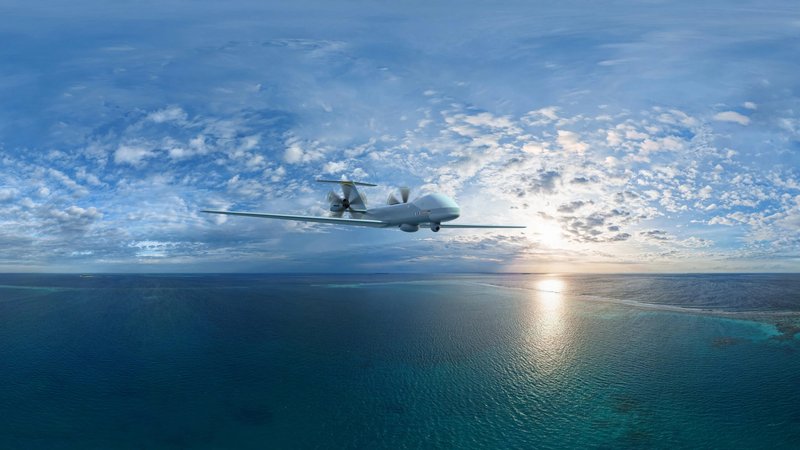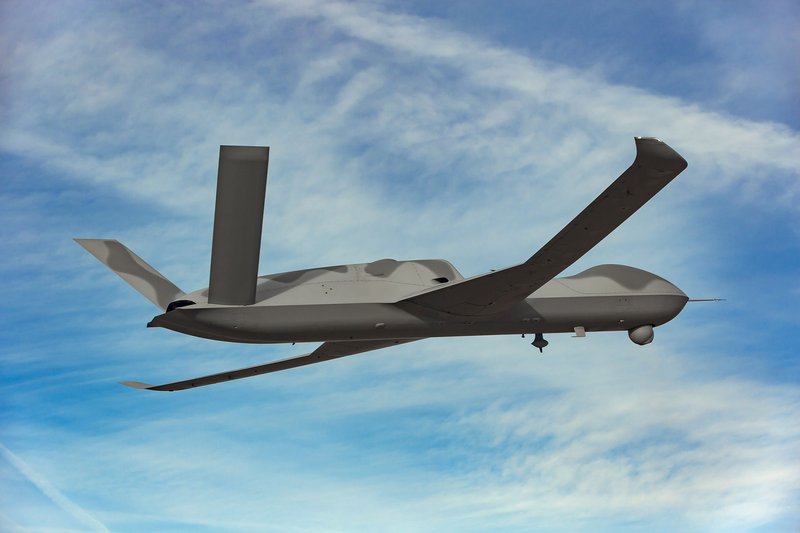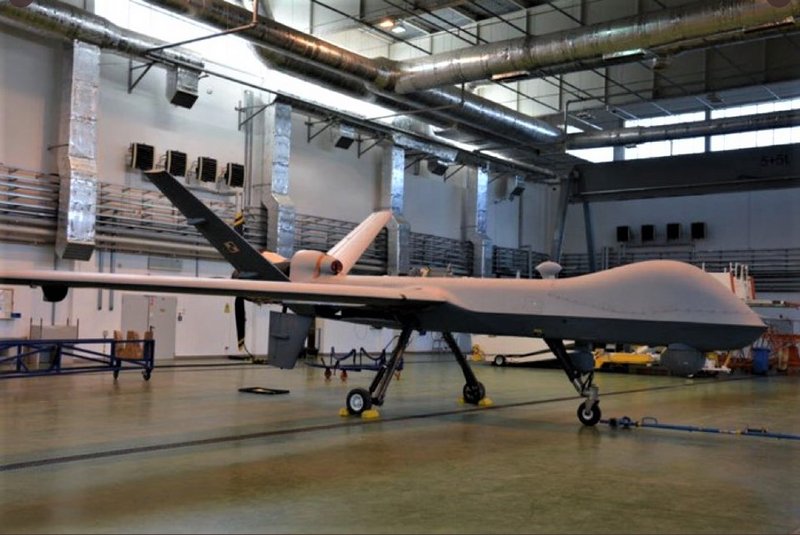Can Eurodrone prosper in a crowded market?
In March 2024, the European Commission attempted to accelerate the long-delayed Eurodrone UAS programme through provision of additional funding. The basic design had been largely agreed by 2018 but stalled during the COVID period, with much of the fine detail yet to be ironed out.
Deliveries had been scheduled from 2025, but this now seems optimistic and actual examples reaching development units in 2027 is more likely. Now extended to the core European quorum of France, Germany, Italy and Spain, the Eurodrone was always going to be a compromise... Continues below
Newsletter Sponsor:

Above: Eurodrone has received additional funding and passed its preliminary design review, but many details still need to be determined. (Image: Airbus)
While a basic ISR platform had always been the objective, the specifics of how the design would best fulfil that requirement had been a point of contention. France and Germany, in particular, disagreed over the single vs twin-engined approach and the balance between size, capability, cost and redundancy.
The persistent question of whether this was a technology-driven defence programme or an industrial vanity project – and to the benefit of whom – has already repeated raised its head.
Eurodrone now seems to have achieved at least some of its goals. In May, Airbus reported it had passed preliminary design review. However, given that it will not clock up serious flight hours until the late 2020s, the basic rationale for its development remains questionable.

US MQ-9s and Israeli Herons are widely available and offer cost-saving maturity. The General Atomics product, in particular, is viewed as capable and robust with a strong support network. The Eurodrone has roughly double the former’s minimum take-off weight and while that does increase payload and persistence, it also affects cost and aircraft availability.
Furthermore, with the inevitable technical S-curve experienced by such products, interest in survivable ISR and UCAV airframes is switching away from the bulbous turboprop towards the sleeker and stealthier jet.
While clearly both types will coexist, it does further question the rationale of sinking significant funds into a multinational MQ-9 equivalent concurrent with the budgetary demands of the SCAF and GCAP next-generation combat systems. A transonic UCAV was supposedly the next goal, not a subsonic turboprop with a high aspect-ratio wing.
There is also the question of the twin-engined approach. As stated above, this is reportedly a legacy of German concerns over redundancy and the choice has certainly been previously explored in the BAE Systems Mantis, Airbus Talarion and Baykar Akıncı as well as various Chinese designs which may or may not have actually flown.
While this configuration does offer some benefits it eats away at the intended role, given that the aircraft is arguably too large for a MALE and too small and underpowered for a HALE. In addition, while engine failure posing a danger to civilians is certainly a valid concern, an aircraft intended to operate above 40,000ft should be able to glide away from an inhabited area even over densely populated Western Europe.
Given the history of European aerospace programmes this issue could be one of the inevitable cracks that is likely at best to distort the effort into something different. At present, the supply chain remains somewhat vague, although a GE/Avio Aero engine and MT-Propeller combo seems confirmed as the powerplant.
Beyond this, most major subsystems are still to be determined and hence the exact range of roles the design is intended to fulfil. A SATCOM terminal, camera/FLIR turret and multi-role radar are a given but exactly how these are intended to be used and in conjunction with what else is unclear. Current operations over the Middle East have certainly stressed persistent surveillance and targeting, but by contrast, the air over Ukraine is dangerous for unescorted and largely predictable aircraft at medium-high altitudes.
The US military is indicating that it is reconsidering how it approaches the traditional, atmospheric operational sphere. The most obvious casualty has been the FARA reconnaissance rotorcraft, deemed non-survivable on the battlefield and hence its role better served by a network of air-land-sea assets. Is the Eurodrone in danger of being ‘yesterday’s design’?

Above: Many expected the next generation of MALE UAS to be a stealthy jet, but upgraded turboprop designs may yet have a part to play, at least for another decade or two. (Photo: General Atomics Aeronautical Systems)
The boring answer is ‘not necessarily’. For the US military, the MQ-20 (which was within the Next-Generation Multi-Role UAS Family of Systems concept) was supposed to replace the MQ-9 and bring ‘peer-conflict survivability’ to the MALE space. While 2022’s budget saw some funding allocated, concurrently an updated MQ-9 design is underway.
As with Eurodrone, politics is clearly a major factor but an improved radar, fighter-compatible secure data-sharing and onboard defensive systems are easy wins for a proven but gracefully ageing design like the Reaper. Hence no one in the US is pretending that a wholesale replacement should be expected before the early 2030s.
This – perhaps fortuitously – fits with the re-branded ‘fleet mass’ approach to what was previously and illogically called ‘attrition’. An upgraded network of previous-generation MALE platforms offers depth if not survivability. Particularly in operations over wide spaces in the Pacific, flying MQ-9s from island facilities and stressing numbers and persistence over outright design and performance certainly has sense.
Concurrent with B-21, NGAD, F/A-XX, E-7 and the perennially problematic F-35 Block 4, holding fire on outright investment in a low-RCS, pure-jet MALE is defendable. Given the choice, commanders would prefer an MQ-20, but there is only so much time, energy and money.
The above is not a million miles from the situation facing the Eurodrone partners. Since 2022 there has been an understandable drive to improve European aerospace and defence investment and the four nations are torn between developing new combat aircraft, buying or upgrading existing fighters, new AEW, new MPA, new trainers and a host of associated items.
A capable but relatively conservative MALE/HALE turboprop design makes sense if it can be made to work. Europe, possibly excepting France, has less of a Pacific-distance need, but range and persistence are interchangeable, so a difference of opinion between partners need not be catastrophic. Pockets less deep than the Pentagon’s and industrial workshare splits are the biggest dangers, as they have always been with European efforts.
The Eurodrone’s critical design review is scheduled for completion by the year-end. A market certainly exists within the continent – with MQ-9 production relatively tied up and the design ageing a new offering for the 2030 timeframe could prove extremely successful.
The Russian threat is unlikely to have vanished and general views on a strong MALE/HALE fleet as an anchor of security prevail. Despite the point above concerning distributed budgets, a platform in this class is useful if perhaps not optimal in terms of performance. Added to the Europeans’ strengths is US reticence to share key technologies even with close allies – as with GCAP, the likes of Japan may decide that Washington is not the best partner.
That said, Eurodrone is far from a revolutionary design. Its target market is currently a buyers’ one and any export success will have accommodate non-European customer tastes. If some form of network-agnostic, plug-and-play aspect can be integrated then there is a definite clientele outside the four key members.

Above: Poland currently operates a fleet of leased MQ-9s which could potentially be replaced by a Eurodrone buy. (Photo: Polish Ministry of National Defence)
Current local estimates are 40-60 platforms total but potential to replace the leased Polish MQ-9s is strong while Scandinavia and the wider Mediterranean nations are obvious customers. Saudi Arabia is making increasingly vocal its desire to be included as a defence project partner and it is not alone in the list of states that could theoretically join.
None of this guarantees the design will be successful or even necessary. French hackles are continuously raised by their neighbours’ procurement of American aircraft and doubtless this will continue. But a local MALE/HALE design does make some sense for local security needs and limited operations over questionable or hostile territory.
As a stepping stone towards a true UCAV it is a viable development strategy given the perceived need for the respective sixth-generation fighters and wider new air fleets. Whether Eurodrone can successfully cut across the complex network of concurrent and rival defence projects is another story.
Other articles in this newsletter:
Can Russian industry sustain a viable air arm?
Replacing the MH-60 – why the US Navy is proceeding with caution
Don't want to miss out on future Decisive Edge content? Make sure you are signed up to our email newsletters.











